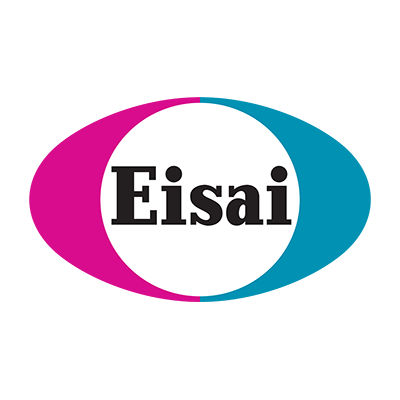预约演示
更新于:2025-08-29

Stemline Therapeutics, Inc.
更新于:2025-08-29
概览
标签
肿瘤
皮肤和肌肉骨骼疾病
血液及淋巴系统疾病
小分子化药
融合蛋白
ADC
疾病领域得分
一眼洞穿机构专注的疾病领域
暂无数据
技术平台
公司药物应用最多的技术
暂无数据
靶点
公司最常开发的靶点
暂无数据
| 排名前五的药物类型 | 数量 |
|---|---|
| 小分子化药 | 7 |
| ADC | 1 |
| 治疗性疫苗 | 1 |
| 融合蛋白 | 1 |
| 树突状细胞疫苗 | 1 |
关联
10
项与 Stemline Therapeutics, Inc. 相关的药物靶点 |
作用机制 ERα拮抗剂 |
原研机构 |
最高研发阶段批准上市 |
首次获批国家/地区 美国 |
首次获批日期2023-01-27 |
作用机制 ACADS inhibitors [+1] |
非在研适应症 |
最高研发阶段批准上市 |
首次获批国家/地区 美国 |
首次获批日期2019-07-03 |
靶点 |
作用机制 CD123抑制剂 |
在研适应症 |
非在研适应症 |
最高研发阶段批准上市 |
首次获批国家/地区 美国 |
首次获批日期2018-12-21 |
28
项与 Stemline Therapeutics, Inc. 相关的临床试验NCT07007052
Open Label Phase II Study Evaluating the Efficacy and Safety of the Combination of Tagraxofusp and Venetoclax in Treatment-naive Blastic Plasmacytoid Dendritic Cell Neoplasm Patients
The goal of this clinical trial is to study the efficacy of the tagraxofusp + venetoclax combination in treatment-naive blastic plasmacytoid dendritic cell neoplasm adult patients.
The main question is to verify the response in patients after 3 cycles of tagraxofusp+venetolax and to demonstrate if the combination of tagraxofusp + venetoclax increases the rate of complete remission, assessed after 3 months of treatment.
Patients will receive a ramp-up phase of venetoclax during 3 days and at least 3 cycles of venetoclax. After, the investigators will evaluate the response, and depending on the response observed, patients may receive additional cycles of treatment for a maximum of 24 cycles, or receive an allograft or discontinue the treatment in the case of therapeutic failure.
The main question is to verify the response in patients after 3 cycles of tagraxofusp+venetolax and to demonstrate if the combination of tagraxofusp + venetoclax increases the rate of complete remission, assessed after 3 months of treatment.
Patients will receive a ramp-up phase of venetoclax during 3 days and at least 3 cycles of venetoclax. After, the investigators will evaluate the response, and depending on the response observed, patients may receive additional cycles of treatment for a maximum of 24 cycles, or receive an allograft or discontinue the treatment in the case of therapeutic failure.
开始日期2025-09-30 |
申办/合作机构 |
NCT06923527
A Single Arm Phase II Trial of Circulating Tumor DNA-guided Adjuvant Therapy With Elacestrant in Hormone Receptor Positive HER2 Negative Breast Cancers at Risk for Late Recurrence (CATE)
This is a single-arm, phase II study examining elacestrant in the adjuvant treatment of patients with ER+ breast cancer who test positive for circulating tumor DNA (ctDNA) during the screening period of the trial.
开始日期2025-09-01 |
申办/合作机构  Yale University Yale University [+2] |
NCT06561152
Tagraxofusp and Low-Intensity Chemotherapy for the Treatment of CD123-Positive Relapsed or Refractory Acute Myeloid Leukemia (AML)
To determine the efficacy of the combination of tagraxofusp, cladribine, and cytarabine.
开始日期2025-02-10 |
申办/合作机构  Stanford University Stanford University [+1] |
100 项与 Stemline Therapeutics, Inc. 相关的临床结果
登录后查看更多信息
0 项与 Stemline Therapeutics, Inc. 相关的专利(医药)
登录后查看更多信息
17
项与 Stemline Therapeutics, Inc. 相关的文献(医药)2025-02-01·JOURNAL OF CONTROLLED RELEASE
White paper: Understanding, informing and defining the regulatory science of microneedle-based dosage forms that are applied to the skin
Review
作者: Henry, Sebastien ; Coulman, Sion A ; Hernandez, Carmen Amelia Rodriguez ; Zehrung, Darin ; Henke, Stefan ; Dick, Lisa ; Alali, Mohammed ; Eakins, Michael N ; Speaker, Tycho Joseph ; Shin, Juyeop ; Forster, Angus Harry ; Frivold, Collrane ; Jarrahian, Courtney ; Lewis, Hayley ; Strasinger, Caroline ; Burke, Matthew Douglas ; Creelman, Benjamin Paul ; Prausnitz, Mark R ; Dul, Maria ; Park, Jung-Hwan ; Gilbert, Philippe-Alexandre ; Birchall, James C ; Robinson, David Kenneth ; Taylor, Kevin M G ; Donnelly, Ryan F ; Hunt, Desmond ; Mistilis, Jessica Joyce ; Ameri, Mahmoud
The COVID-19 pandemic has accelerated pre-clinical and clinical development of microneedle-based drug delivery technology. However the regulatory science of this emerging dosage form is immature and explicit regulatory guidance is limited. A group of international stakeholders has formed to identify and address key issues for the regulatory science of future products that combine a microneedle device and active pharmaceutical ingredient (in solid or semi-solid state) in a single entity that is designed for application to the skin. Guided by the principles of Quality by Design (QbD) and informed by consultation with wider stakeholders, this 'White Paper' describes fundamental elements of the work in an effort to harmonise understanding, stimulate discussion and guide innovation. The paper discusses classification of the dosage form (combination/medicinal product), the regulatory nomenclature that is likely to be adopted and the technical vocabulary that best describes its form and function. More than twenty potential critical quality attributes (CQAs) are identified for the dosage form, and a prioritisation exercise identifies those CQAs that are most pertinent to the dosage form and that will likely require bespoke test methods (delivered dose, puncture performance) or major adaptions to established compendial test methods (dissolution). Hopefully the work will provide a platform for the development of dosage form specific guidance (from regulatory authorities and/or international pharmacopoeias), that expedites clinical translation of safe and effective microneedle-based products.
2023-09-01·Journal of controlled release : official journal of the Controlled Release Society
Assessing the risk of a clinically significant infection from a Microneedle Array Patch (MAP) product
Letter
作者: Henry, Sebastien ; Hernandez, Carmen Amelia Rodriguez ; Zehrung, Darin ; Dick, Lisa ; Taylor, Kevin Michael ; Alali, Mohammed ; Eakins, Michael N ; Coulman, Sion A ; Henke, Stefan ; Shin, Juyeop ; Forster, Angus Harry ; Prausnitz, Mark R ; Jarrahian, Courtney ; Robinson, David Kenneth ; Lewis, Hayley ; Maibach, Howard I ; Burke, Matthew Douglas ; Creelman, Benjamin Paul ; Speaker, Tycho Joseph ; Dul, Maria ; Gilbert, Philippe-Alexandre ; Park, Jung-Hwan ; Ross, Charles ; Donnelly, Ryan F ; Mistilis, Jessica Joyce ; Birchall, James C ; Hunt, Desmond ; Ameri, Mahmoud ; Frivold, Collrane ; Craig, Christine M
Microneedle Array Patches (MAPs) are an emerging dosage form that creates transient micron-sized disruptions in the outermost physical skin barrier, the stratum corneum, to facilitate delivery of active pharmaceutical ingredients to the underlying tissue. Numerous MAP products are proposed and there is significant clinical potential in priority areas such as vaccination. However, since their inception scientists have hypothesized about the risk of a clinically significant MAP-induced infection. Safety data from two major Phase 3 clinical trials involving hundreds of participants, who in total received tens of thousands of MAP applications, does not identify any clinically significant infections. However, the incumbent data set is not extensive enough to make definitive generalizable conclusions. A comprehensive assessment of the infection risk is therefore advised for MAP products, and this should be informed by clinical and pre-clinical data, theoretical analysis and informed opinions. In this article, a group of key stakeholders identify some of the key product- and patient-specific factors that may contribute to the risk of infection from a MAP product and provide expert opinions in the context of guidance from regulatory authorities. Considerations that are particularly pertinent to the MAP dosage form include the specifications of the finished product (e.g. microbial specification), it's design features, the setting for administration, the skill of the administrator, the anatomical application site, the target population and the clinical context. These factors, and others discussed in this article, provide a platform for the development of MAP risk assessments and a stimulus for early and open dialogue between developers, regulatory authorities and other key stakeholders, to expedite and promote development of safe and effective MAP products.
2022-10-01·Clinical Lymphoma Myeloma & Leukemia
AML-397 Integrated Safety Analysis of Tagraxofusp, a CD123-Directed Targeted Therapy, in Patients With Hematologic Malignancies
Article
作者: Yacoub, Abdulraheem ; Patnaik, Mrinal M ; Stein, Anthony S ; Ali, Haris ; Rizzieri, David ; Wang, Eunice S ; Sieminski, Deborah ; Sweet, Kendra ; Lane, Andrew A ; Lee, Sangmin ; Taparia, Minakshi S ; Anant, Madhu ; Walter, Roland B ; Rosenblat, Todd L ; Mughal, Tariq I ; Foran, James M ; Gupta, Vikas ; Konopleva, Marina ; Pammaraju, Naveen ; Kantarjian, Hagop ; Schiller, Gary J ; Vasu, Sumithira
CONTEXT:
The interleukin-3 receptor alpha chain (CD123), a cell-surface target, is aberrantly expressed on various myeloid neoplasms, including blastic plasmacytoid dendritic cell neoplasm (BPDCN), acute myeloid leukemia (AML), chronic myelomonocytic leukemia (CMML), and myelofibrosis (MF). Tagraxofusp (TAG, SL-401), a first-in-class CD123-targeted therapy, is the only treatment approved by the FDA and EMA for patients with BPDCN and is being investigated in AML, CMML, and MF.
OBJECTIVE:
To report the aggregated safety data for TAG monotherapy from trials in BPDCN, AML, CMML, and MF.
DESIGN:
An integrated safety analysis was performed for patients who received TAG monotherapy in three phase 1/2, multicenter clinical studies: Study 0114 (NCT02113982; BPDCN/AML), Study 0214 (NCT02270463; AML), and Study 0314 (NCT02268253; CMML/MF).
SETTING:
Hospitals and medical research institutions.
PATIENTS:
In total, 201 patients were included: BPDCN, n=86; AML, n=36; CMML, n=33; and MF, n=36.
INTERVENTION(S):
Patients received the recommended phase 2 TAG dose of 12 mcg/kg intravenously on days 1-3 (MF and CMML) or days 1-5 (BPDCN and AML).
MAIN OUTCOME MEASURE(S):
Treatment-related adverse events (TRAEs), adverse events (AEs) of interest, and discontinuations.
RESULTS:
As of July 2021, 11 (6%) patients discontinued TAG due to any-grade TRAEs. The most common any-grade TRAEs included hypoalbuminemia (41%), increased alanine (ALT; 40%) and aspartate (AST; 39%) aminotransferases, and thrombocytopenia (26%). The most common grade ≥3 TRAEs were thrombocytopenia (20%), increased AST (20%), and increased ALT (17%). Prolonged bone marrow suppression was not observed. Overall, 23% of patients experienced ≥1 serious TRAE. The onset of most TRAEs occurred in cycle 1 and was resolved by cycle 2. Capillary leak syndrome (CLS) occurred in 35 patients (17%), with onset usually within cycle 1. Most CLS events were non-severe (grade ≤2); 2 of 201 (1%) patients had a grade 5 event.
CONCLUSIONS:
This integrated analysis is the largest collation of safety data following treatment with TAG monotherapy. Most TRAEs were transient, and their frequency/severity decreased with increasing cycles. No myelosuppression or cumulative toxicity was reported following treatment over multiple cycles. These data confirm that the established and manageable safety profile of TAG monotherapy has been maintained in the 3 years following US approval.
141
项与 Stemline Therapeutics, Inc. 相关的新闻(医药)2025-06-26
·智药邦
2025年6月2日,Biopharma Dealmakers上发表文章AI deals show no sign of slowing,回顾了过去一年里以AI为重点的生物医药合作情况,并介绍了包括跨国制药公司对AI的整合、AI平台在治疗方式上的多元化、中型生物技术公司的参与、初创公司和联盟的合作、数据经纪的重要性等内容。Biopharma Dealmakers是Springer Nature旗下发布全球生命科学、生物制药领域有关合作活动信息和分析的期刊。过去一年,以AI为重点的生物制药合作吸引了大笔预付款,此外,AI的影响力已然扩展到小分子药物发现之外。人工智能交易开始涉及九位数现金支付、股权投资及数十亿美元的里程碑和特许权使用费结构。这些合作涵盖从对外授权发现平台、数据许可协议到联合开发等多种形式。但迄今为止,真正从端到端AI驱动管线中授权的临床就绪资产(clinical-ready assets)仍寥寥无几。目前正出现四大显著趋势:预付款承诺增加、专注新型治疗模式(如生物制剂而非小分子)、细分领域数据提供商崛起;以及中大型生物科技公司参与度提升。Biovista总裁兼首席执行官Aris Persidis表示:机器学习依然风靡,持续的交易活动和增加的预付款恰恰反映了这一现实。行业正逐渐接受这一概念,即将机器学习融入药物发现可加速靶点识别和先导化合物优化。尽管业界正以更精细的方式运用AI和ML(例如用于微调传统方法开发的分子),但AI衍生的资产尚未在临床中证明自身价值。跨国药企寻求更深层次的AI整合近年来,跨国药企日益依赖搜索开发范式或生物技术收购来充实管线--最近则通过在中国的一系列交易获取低价资产。这些公司已逐步建立内部AI基础设施,但仍渴求AI"解决方案",尤其是那些宣称能整合多组学数据(如基因组学、转录组学、蛋白质组学和患者临床数据)的供应商。该技术被包装为药物靶点识别的增效工具,以及促进高效力小分子结合物开发的利器,既能节省精力、资源和时间,又能整体加速发现和临床前开发进程。去年初的典型案例是Gilgamesh制药与艾伯维的合作(见表1)。这是首个受迷幻药物启发的AI合作项目,利用Gilgamesh的"神经可塑性原"平台--一种用于设计伊博格碱类分子衍生物的高级分子建模技术。该交易为艾伯维提供了进入蓬勃发展的中枢神经系统(CNS)领域的交钥匙方案,且模式风险已降低。除6500万美元预付款外,艾伯维还获得了抑郁症、创伤后应激障碍(PTSD)和焦虑症临床候选药物的权利,累计里程碑付款高达19.5亿美元,并可根据全球销售额收取阶梯式特许权使用费。表1 2024年以来选定的关键人工智能生物医药交易继先行者BigHat Biosciences、Generate:Biomedicines、Absci和Nabla Bio之后,Biolojic Design于2024年6月与默克集团达成的协议聚焦多特异性抗体和抗体偶联药物(ADC)而非小分子(见表1)。Biolojic的AI驱动抗体工程引擎通过深度学习同步预测复杂结合界面和连接子设计,将候选物筛选时间缩短50%。默克集团支付的低两位数百万欧元预付款(外加3.46亿欧元靶点特异性里程碑付款),凸显了快速生物制剂原型设计在肿瘤学和炎症领域的战略重要性。与纯发现交易不同,Ochre Bio去年6月与GSK的协议围绕专有人类数据集展开(见表1)。Ochre的人类肝脏单细胞转录组和器官灌注数据为肝病AI模型提供了关键训练材料。这项为期3年、价值3750万美元的数据许可交易,使GSK能获取用于AI模型开发的原始及处理数据,同时GSK提供专家注释支持。这种安排体现了制药企业日益愿意为高质量真实世界数据付费--这些数据既难以在学术机构复制,也非公共数据库中唾手可得。Generate:Biomedicines去年9月与诺华的合作围绕该AI生物技术公司的生成式蛋白质设计平台展开,该平台结合了基于Transformer的语言模型和图神经网络(见表1)。这家Flagship Pioneering旗下公司宣称可生成具有预定结构和功能约束的全新小分子药物。诺华支付的6500万美元预付款(含1500万美元股权)及可能超过10亿美元的里程碑付款,表明其愿意押注这家AI初创公司开发同类首创生物制剂的能力。该协议还包含联合指导委员会治理条款,确保双方共同决策项目选择和候选物推进。最后,Creyon Bio今年4月与礼来的交易凸显了AI设计寡核苷酸的战略价值(其基础是Ionis制药数十年积累的寡核苷酸数据集)。Creyon的平台将机器学习优化的化学技术与预测性药代动力学建模相结合,设计出稳定性更高、组织靶向性更强的寡核苷酸。礼来支付的1300万美元预付款(现金与股权组合)及逾10亿美元的里程碑资金,使该公司能探索多种适应症而无需承担传统对外授权风险。这些巨额交易均反映出制药研发外包的趋势:将早期发现项目外包给专业AI公司,同时继续利用内部在临床开发、监管事务和商业化方面的专长。正如英矽智能CEO Alex Zhavoronkov所言:"许多大公司已在NVIDIA集群上投入资金,与微软或亚马逊建立合作,完成了内部人才招聘。但若仍有资金盈余,他们就会寻求外部AI解决方案合作。"治疗模式日益受重视尽管AI领域绝大多数活动仍集中在小分子药物,但我们正见证AI平台向其他治疗模式拓展。Zhavoronkov表示,部分原因可能源于《通胀削减法案》的动态--生物制剂比小分子享有更长的过渡期。表2列举了围绕新型治疗模式(如反义寡核苷酸、肽模拟物和抗体)的合作案例。表2 最近围绕不同治疗方式的人工智能交易这些AI供应商通过专注单一模式提供细分领域专长,从而吸引寻求差异化解决方案的生物制药合作伙伴。每次合作中,明确的聚焦方向似乎都能换来制药或生物技术合作伙伴的高额预付款,再次印证了"押注AI供应商宣称的专业能力可降低技术风险并加速发现进程"的战略逻辑。生物技术公司入局历史上缺乏内部AI团队的中型生物技术公司也开始采用外部AI平台加速靶点发现和小分子优化。与跨国公司的重磅级预付款不同,这些协议预付款金额适中(2000-3000万美元),但里程碑和特许权使用费条款更为优厚。Cartography Bioscience与吉利德科学的合作就是典型案例(见表1)。Cartography的ATLAS/SUMMIT平台结合多组学患者数据集与AI推理技术,绘制肿瘤选择性抗原图谱。吉利德支付的2000万美元预付款资助了三阴性乳腺癌和非小细胞肺癌的多靶点研究计划,每个项目的临床和商业里程碑估值达5亿美元。净销售额特许权使用费确保Cartography能从成功资产中获益。在更近期的2025年2月交易中,Genesis Therapeutics与Incyte达成协议,从该初创公司的机器学习模型中筛选最多三个肿瘤学靶点的小分子候选物。Incyte支付的3000万美元预付款与每个靶点潜在2.95亿美元里程碑付款形成鲜明对比,反映出对这些模型能产生具有优化吸收、分布、代谢和排泄(ADME)特性的高质量hit的信心。内置指导委员会和数据共享协议使Incyte既能了解ML工作流程,又保留追加靶点的选择权。值得注意的是,Zhavoronkov创立的英矽智能持续成功对外授权候选物(2023年将其首个药物先导物--泛素羧基末端水解酶1(USP1)卖给Exelixis)。"那时业界才真正开始关注,"Zhavoronkov表示。今年Menarini旗下Stemline Therapeutics向英矽智能支付2000万美元预付款及逾5.5亿美元里程碑付款,获得多个资产授权,并在商业化后按层级支付特许权使用费。该合作体现了双向价值交换:Menarini从AI发现中获得尖端资产,英矽智能则获得行业对其平台的进一步验证及联合知识产权(IP)所有权(见表2)。所有案例中,生物技术合作伙伴都保留了下游开发、注册和商业化权利。多数情况下,AI公司主要充当"流水线创新者"角色,宣称能在协议签署后12-18个月内交付"临床就绪"化合物。与初创公司及联盟的合作在如此多的炒作与资金流动下,提供AI/ML解决方案的小公司呈现寒武纪大爆发式增长。许多AI初创企业正寻求与生物制药合作伙伴、学术联盟或聚焦特定疾病的基金会合作,通过研究协作验证其平台。在这些非稀释性合作中,AI供应商通过提供平台使用权换取数据或联合知识产权选项,从而加速平台在新治疗领域的验证,并吸引后续更大规模企业的参与。2025年4月,Elix与PRISM BioLab宣布将Elix的AI驱动靶点参与预测模型与PRISM的环肽模拟物生成技术结合使用(见表2)。根据一项合作研究与成本分担协议,Elix负责肽骨架的计算设计,而PRISM的高通量组合肽模拟物合成与筛选平台则用于验证排名靠前的计算机模拟候选物。试点研究发现了三种可抑制困难蛋白-蛋白相互作用的新颖化学型,从而获得对由此产生的IP进行临床前开发的许可选项。在CNS领域,Biostate AI于2025年4月与加速治愈项目(ACP)达成的联盟聚焦多发性硬化症。Biostate基于Transformer的模型正被用于分析ACP的纵向生物样本库,以识别可预测复发的早期蛋白质组学和转录组学生物标志物特征。联合开发协议包括与模型性能指标挂钩的里程碑付款,以及对共同开发数字诊断工具的选择权。同样在2025年2月,Receptor.AI与Moexa制药达成协议,利用Receptor.AI集成的小分子和肽建模工作流优化Moexa开发的SMAD3抑制剂(用于肿瘤学和纤维化适应症)。该交易采用预付费服务模式并附带预定义的许可选项,Moexa获得了快速系列优化,而Receptor.AI则取得了对未来先导化合物的选择权,从而推动平台验证并可能带来股权增值。这些联盟和初创公司协议表明,AI生物技术公司正将业务版图扩展至制药领域之外,通过接触生物制药初创企业、学术机构和疾病基金会生态系统来多样化验证用例并创造替代收入来源。数据经纪人高质量、特定疾病的数据集是构建稳健因果生成式ML模型的基础。随着公共数据库趋于饱和且被过度挖掘,药物研发者开始转向精选的私有数据集。2025年4月,阿斯利康与Pathos AI将这一趋势具现为与Tempus达成的2亿美元多年期协议。Pathos AI将基于Tempus提供的超过15万名患者的去标识化临床、基因组和影像数据,开发肿瘤学基础模型。共享知识产权条款允许阿斯利康和Pathos AI分别在各自管线中应用这些模型,而联合出版物则确保了科学透明度。通过大规模授权真实世界数据并分摊注释成本,阿斯利康获得了用于因果发现和生物标志物预测的定制基础模型,而Tempus则在不承担直接药物开发风险的情况下实现了数据资产货币化。类似地,Ochre Bio与GSK的合同凸显了跨器官系统人类单细胞数据集日益增长的价值。随着AI模型对更高粒度数据的需求,器官特异性及基于灌注的数据集能获取溢价许可费,这使得数据从AI公司的成本中心转变为收入来源。行业走向成熟AI工具已从药物发现机构的"锦上添花"变为"必备要素"。"现在说机器学习已成为靶点识别和临床前发现工作不可或缺的部分,已不存在争议,"Persidis表示。平均预付款已从2024年前的500-1500万美元跃升至过去一年的2000-6500万美元。里程碑结构金额常超过10亿美元,远超往年5亿美元以下的规模,这也反映了对这些工具日益增长的信心。吉利德、Incyte和Menarini等非跨国药企巨头的参与同样是行业成熟的标志。尽管数量稀少,但少数现金充裕的AI科技生物公司正反向引进资产--这一趋势始于2019年Benevolent AI从杨森制药获取资产。如今这股趋势已延伸至高级医药产品领域:2025年3月,Hologen AI与基因治疗开发商MeiraGTx成立合资公司Hologen Neuro AI,推进一款经临床验证的腺相关病毒基因治疗资产。该交易中,Hologen AI支付2亿美元预付款并承诺年度资金支持,以换取MeiraGTx制造子公司的少数股权(其将利用自身模型进行优化)。另有数笔交易应用AI解决方案提升药物可开发性和生物技术制造水平。在当前融资环境严寒导致生物科技公司现金流紧张的背景下,现金充裕的科技生物公司可能会持续寻找资产引进和合资机会。然而真正的核心资产仍是数据。Tempus与阿斯利康、Ochre与GSK之间的交易(见表1)表明,高质量、特定疾病的数据集正变得与发现IP同样珍贵,它们支撑着新一代因果生成式基础模型。展望未来,随着AI平台持续成熟并能稳定实现先导化合物生成和临床前验证,交易数量和金额势必将进一步增长。战略联盟将越来越多地将生成式、因果式和基础式AI方法与多样化的生物学、化学、毒理学和临床数据相结合。全行业采用AI驱动药物发现的进程已不可逆转。参考资料:AI deals show no sign of slowing. https://doi-org.libproxy1.nus.edu.sg/10.1038/d43747-025-00027-z--------- End ---------感兴趣的读者,可以添加小邦微信加入读者实名讨论微信群。添加时请主动注明姓名-企业-职位/岗位或姓名-学校-职务/研究方向。
并购引进/卖出
2025-05-31
CHICAGO, IL, USA I May 30, 2025 I
Leading international medical research company, MEDSIR announced today the positive results of the TUXEDO-3 trial at the American Society of Clinical Oncology (ASCO) Annual Meeting 2025. This phase II study funded by Daiichi Sankyo and Merck, known as MSD outside of the United States and Canada, evaluates the efficacy and safety of patritumab deruxtecan (HER3-DXd) in patients with active brain metastases and leptomeningeal disease, serious complications associated with advanced stages of the cancer.
The study was carried out to evaluate HER3-DXd in patients with metastatic breast cancer (mBC) and advanced non-small cell lung cancer (aNSCLC) with active brain metastases, and patients with leptomeningeal disease from solid tumors. This is an antibody-drug conjugate to target HER3, a protein receptor found on the surface of cancer cells in brain metastases. HER3-DXd is an investigational agent consisting of a fully human anti-HER3 IgG1 monoclonal antibody attached to a number of topoisomerase I inhibitor payloads (an exatecan derivative, DXd) via tetrapeptide-based cleavable linkers. The DXd ADC Technology payload causes tumor DNA damage, killing cancer cells within and surrounding the tumor microenvironment
The study showed promising results, which were presented today in an oral session. Results from the leptomeningeal cohort have been simultaneously published in the renowned journal
Nature Medicine
due to its potential benefit in patients with a high unmet medical need. In patients with breast cancer and brain metastases, intracranial responses were observed across all breast cancer subtypes, including luminal, HER2-positive, and triple-negative. Furthermore, some patients with breast cancer who had previously received antibody-drug conjugates also responded to HER3-DXd, highlighting the potential of HER3-DXd to overcome resistance and expand treatment options in refractory disease. Intracranial activity was also observed in patients with aNSCLC and brain metastases, intracranial responses were observed in patients whose tumors contained no activating driver mutations as well as patients whose tumors contained an EGFR or KRAS mutation. Overall, the data suggest that HER3-DXd may offer a novel treatment option for patients with secondary CNS involvement.
KEY HIGHLIGHTS OF THE TUXEDO-3 STUDY
The TUXEDO-3 study aimed to assess whether HER3-DXd could be an effective treatment option for patients with mBC and aNSCLC with active brain metastases, and leptomeningeal disease from solid tumors.
The study met its primary objectives, with 23.8% and 30% patients achieving intracranial responses in active brain metastases from patients with mBC and aNSCLC, respectively, and 65% patients with leptomeningeal disease alive after 3 months. Side effects were consistent with previous studies using HER3-DXd. Tests evaluating quality of life and neurocognitive functions showed that patients remained stable or improved during the treatment follow-up.
The primary objectives consisted of assessing the intracranial objective response rate in patients with active brain metastases from mBC and aNSCLC, and determining the number of patients with leptomeningeal disease alive after 3 months of starting the treatment.
A NEW HOPE FOR DIFFICULT-TO-TREAT METASTASES
“This study represents a significant advancement in our understanding of how to treat brain metastases and leptomeningeal disease, and we are hopeful that our findings will pave the way for new, effective therapies for these patients,” stated Dr. Matthias Preusser, MD, Medical Oncologist and Head of the Clinical Division of Oncology, Medical University of Vienna and Principal Investigator of TUXEDO-3. Dr. Rupert Bartsch, MD, PhD, Consultant Hematology and Medical Oncology, Medical University of Vienna, added: “Brain metastases and leptomeningeal disease represent severe complications in cancer, leading to increased morbidity and mortality, and HER3-DXd could be a promising therapeutic alternative for these patients.”
ABOUT UMMET CANCER NEEDS
Unmet cancer needs refer to gaps in resources, support, and treatment options that exist for cancer patients. Addressing unmet cancer needs is crucial to improving quality of life and outcomes for cancer patients. Through the collaborative work of healthcare providers, policymakers, and patient advocacy groups unmet cancer needs can be identified to help provide patients with comprehensive and quality care.
SHOWCASING PROMISING COLLABORATIVE TRIALS AT ASCO
In addition to the oral presentation of TUXEDO-3, MEDSIR will present both ADELA and WIN-B studies in poster format. The
ADELA
clinical trial is an ongoing international phase III study in collaboration with The Menarini Group, a leading international pharmaceutical and diagnostics company, and Stemline Therapeutics, Inc., a wholly-owned subsidiary of the Menarini Group focused on bringing transformational oncology treatments to cancer patients. The study is being conducted across multiple countries which combines elacestrant with everolimus to treat advanced ER+/HER2- breast cancer with
ESR1
mutations, aiming to delay disease progression.
Regarding
WIN-B
, is a phase Ib/II, multi-center investigator-initiated trial, evaluating the safety and preliminary efficacy of combining Debiopharm’s selective WEE1 inhibitor, Debio 0123 and Gilead’s antibodydrug conjugate Trodelvy
®
(sacituzumab govitecan-hziy) in advanced HR+/HER2- and triple-negative breast cancers.
MEDSIR active presence at the ASCO Annual Meeting 2025 reinforces its leadership in excellence-driven oncology research and highlights its focus on addressing unmet needs in cancer treatment, with the aim of not leaving any patient left behind.
ABOUT MEDSIR
Established in 2012, MEDSIR prides itself on working closely with its strategic partners to drive innovation in oncology research. Operating in Spain and the United States, the company provides end-to-end clinical trial management, from study design to publication, with an extensive global network of experts and integrated technology to streamline the process. The company offers proof-of-concept support and a strategic approach that enables research partners to benefit from the best of both worlds: industry clinical research and investigator-driven trials.
With the aim of promoting independent research worldwide, MEDSIR has formed a strategic alliance with Oncoclínicas, the leading oncology group in Brazil, which offers outstanding research potential in South America. For further information:
www.medsir.org
SOURCE:
MEDSIR
临床结果临床2期ASCO会议临床3期临床1期
2025-05-25
·美通社
ELEVATE研究中elacestrant联合
依维莫司
和
瑞博西尼队列的
初步疗效分析,以及
elacestrant与其他靶向疗法联合治疗组的最新安全性数据
将被公布。
这些数据突显了elacestrant作为内分泌治疗基础药物,与各类靶向药物联合用于ER+/HER2- mBC患者的潜在作用。
通过广泛研究建立的elacestrant稳健临床开发项目,进一步巩固了该药物在mBC和早期乳腺癌中作为单药及联合治疗的潜在价值。
意大利佛罗伦萨和纽约
2025年5月26日
/美通社/ -- 国际领先制药与诊断公司Menarini Group(简称Menarini)及其全资子公司Stemline Therapeutics, Inc.(简称Stemline,专注于为癌症患者提供突破性肿瘤治疗方案),将公布1b/2期ELEVATE研究在雌激素受体阳性(ER+)、HER2阴性(HER2-)局部晚期或转移性乳腺癌(mBC)患者中的最新初步疗效与安全性数据。 ELEVATE研究旨在评估口服药物联合治疗方案的安全性和有效性,以克服ER+/HER2- mBC中观察到的不同耐药机制,从而改善患者预后。 此外,其还将公布多项正在进行的试验进展,探索elacestrant作为贯穿乳腺癌全程治疗的内分泌治疗(ET)基础药物的潜在价值。 这些数据将于2025年美国临床肿瘤学会(ASCO)年会上发布。
ELEVATE研究包括六种治疗方案,评估elacestrant与CDK4/6抑制剂(帕博西尼、阿贝西尼和瑞博西尼)以及与PI3K/AKT/mTOR通路抑制剂(依维莫司、阿培利司和卡帕塞替尼)的联合用药。 在ASCO 2025上报告的ELEVATE结果(摘要1070/49)涵盖更新的疗效数据,这些数据展示了elacestrant联合瑞博西尼和elacestrant联合依维莫司队列的良好初步无进展生存期(PFS)。 2期推荐剂量(RP2D)被确定为elacestrant 345 mg联合瑞博西尼400 mg。 elacestrant 345 mg联合依维莫司7.5 mg的RP2D先前已有报告。
“令人鼓舞的是,在依维莫司和瑞博西尼分别与elacestrant联合使用中,我们观察到了积极的初步疗效和安全性结果。 这些发现与去年12月公布的同一研究中elacestrant联合阿贝西尼队列的有前景数据一致,在该治疗背景下也显示出良好的初步疗效和安全性。”希望之城综合癌症中心女性癌症项目主任、乳腺肿瘤科主任、医学博士Hope S. Rugo表示, “随着ELEVATE研究中各队列的无进展生存期数据和安全性数据不断成熟,elacestrant有潜力成为转移性乳腺癌联合治疗方案中的内分泌治疗基础药物,这令我们感到鼓舞。”
另外报告的数据(摘要1079/58)提供了ELEVATE研究四个队列的最新1b/2期安全性结果,包括elacestrant联合瑞博西尼、依维莫司、阿培利司和卡帕塞替尼的治疗组。 这些最新初步结果表明,联合治疗方案的安全性特征与各靶向药物联合标准内分泌治疗的已知安全性特征相符。
“这些数据进一步印证了elacestrant作为ER+/HER2-转移性乳腺癌治疗领域联合用药选择的重要潜力。”Menarini Group首席执行官Elcin Barker Ergun表示, “我们还在探索elacestrant在其他患者人群中的潜力,包括我们目前正在招募的ELEGANT研究,该研究旨在评估其对高复发风险的早期乳腺癌患者的潜在益处。”
此外,该公司还将在ASCO年会上公布其他数据。 有关Menarini Stemline摘要的完整列表,请参阅下文。
Menarini Stemline摘要:
报告标题:
elacestrant(Ela)联合瑞博西尼(Ribo)和依维莫司(Eve)治疗ER+/HER2-局部晚期或转移性乳腺癌(mBC)患者(pts):来自ELEVATE 1b/2期(Ph)开放标签伞式研究的更新数据。
摘要编号:
1070
报告日期与时间:
6月2日星期一上午9:00-中午12:00(美国中部时间)
地点:
Poster Bd 49
报告作者:
Hope S. Rugo
报告标题:
elacestrant联合治疗ER+/HER2-局部晚期或转移性乳腺癌(mBC)患者:来自ELEVATE 1b/2期(Ph)开放标签伞式研究的安全性更新。
摘要编号:
1079
报告日期与时间:
6月2日星期一上午9:00-中午12:00(美国中部时间)
地点:
Poster Bd 58
报告作者:
Nancy Chan
报告标题:
ADELA:elacestrant(ELA)联合依维莫司(EVE)对比ELA联合安慰剂(PBO)治疗ER+/HER2-晚期乳腺癌(aBC)伴ESR1突变且对内分泌治疗(ET)联合CDK4/6抑制剂进展患者的双盲、安慰剂对照、随机3期临床试验。
摘要编号:
TPS1129
报告日期与时间:
6月2日星期一上午9:00-中午12:00(美国中部时间)
地点:
Poster Bd 103b
报告作者:
Antonio Llombart-Cussac
报告标题:
ELCIN:elacestrant治疗未接受过CDK4/6抑制剂(CDK4/6i)治疗的雌激素受体阳性(ER+)、HER2阴性(HER2-)转移性乳腺癌(mBC)患者:一项开放标签多中心2期研究。
摘要编号:
TPS1127
报告日期与时间:
6月2日星期一上午9:00-中午12:00(美国中部时间)
地点:
Poster Bd 102b
报告作者:
Virginia G. Kaklamani
报告标题:
ELEGANT:elacestrant对比标准内分泌治疗(ET)用于淋巴结阳性、雌激素受体阳性(ER+)、HER2阴性(HER2-)、高复发风险早期乳腺癌(eBC)患者的全球多中心随机开放标签3期研究。
摘要编号:
TPS619
报告日期与时间:
6月2日星期一上午9:00-中午12:00(美国中部时间)
地点:
Poster Bd 210a
报告作者:
Aditya Bardia
报告标题:
EORTC-2129-BCG:elacestrant治疗ctDNA复发的ER+/HER2-乳腺癌患者(TREAT ctDNA)
摘要编号:
TPS620
报告日期与时间:
6月2日星期一上午9:00-中午12:00(美国中部时间)
地点:
Poster Bd 210b
报告作者:
Michail Ignatiadis
关于elacestrant临床开发项目
目前还在多项公司资助的转移性乳腺癌临床试验中研究elacestrant,包括单独使用或与其他疗法联合使用。 ELEVATE(
NCT05563220
)是一项1b/2期临床试验,旨在评估elacestrant与阿培利司、依维莫司、卡帕塞替尼、帕博西尼、瑞博西尼或阿贝西尼联合用药的安全性和疗效。 ELECTRA(
NCT05386108
)是一项开放标签、多中心1b/2期研究,旨在评估elacestrant与阿贝西尼联合用于ER+、HER2-乳腺癌患者的治疗。 2期部分将评估这一治疗方案在脑转移患者中的效果。 ELCIN(
NCT05596409
)是一项2期试验,旨在评估elacestrant对于既往接受过一种或两种激素治疗且在癌症转移情况下既往未接受过CDK4/6抑制剂治疗的ER+、HER2-晚期/转移性乳腺癌患者的疗效。 ADELA(
NCT06382948
)是一项3期随机双盲试验,旨在评估elacestrant与依维莫司联合用于ER+、HER2- mBC伴ESR1突变肿瘤患者的疗效。 由研究者主导的其他试验、与其他公司合作开展的转移性乳腺癌和早期疾病试验也在对elacestrant进行评估。
关于ORSERDU(elacestrant)
美国适应症:
ORSERDU(elacestrant)345 mg片剂,适用于治疗雌激素受体(ER)阳性、人表皮生长因子受体2(HER2)阴性、
ESR1
突变的晚期或转移性乳腺癌绝经后女性或成年男性患者,且患者需在接受至少一线内分泌治疗后出现疾病进展。
有关美国的完整处方信息,请访问
www.orserdu.com
。
重要安全性信息
警告和注意事项
血脂异常
:服用ORSERDU的患者中高胆固醇血症和高甘油三酯血症的发生率分别为30%和27%。 3级和4级高胆固醇血症和高甘油三酯血症的发生率分别为0.9%和2.2%。 在开始服用ORSERDU之前及服用期间定期监测血脂。
胚胎毒性
:根据动物试验结果及其作用机制,ORSERDU用于孕妇时可能对胎儿造成伤害。 向孕妇和育龄女性告知对胎儿的潜在风险。 建议育龄女性在使用ORSERDU进行治疗期间及末次给药后1周内采取有效避孕措施。 建议有育龄女性伴侣的男性患者在使用ORSERDU进行治疗期间及末次给药后1周内采取有效避孕措施。
不良反应
接受ORSERDU治疗的患者中,有12%出现过
严重不良反应
。 接受ORSERDU治疗的患者中,发生率>1%的严重不良反应包括肌肉骨骼疼痛(1.7%)和恶心(1.3%)。 接受ORSERDU治疗患者中,有1.7%出现过致命不良反应,包括心脏骤停、感染性休克、憩室炎和未知原因(各1名患者)。
包括实验室检查异常在内,ORSERDU最常见的不良反应(
>10%
)
为:肌肉骨骼疼痛(41%)、恶心(35%)、胆固醇升高(30%)、AST升高(29%)、甘油三酯升高(27%)、乏力(26%)、血红蛋白降低(26%)、呕吐(19%)、ALT升高(17%)、血钠降低(16%)、肌酐升高(16%)、食欲减退(15%)、腹泻(13%)、头痛(12%)、便秘(12%)、腹痛(11%)、潮热(11%)以及消化不良(10%)。
药物相互作用
与CYP3A4诱导剂和/或抑制剂同时使用
:避免强效或中效CYP3A4抑制剂与ORSERDU同时使用。 避免强效或中效CYP3A4诱导剂与ORSERDU同时使用。
特殊人群用药
哺乳
:建议哺乳期妇女在接受ORSERDU治疗期间和末次给药后1周内不进行母乳喂养。
肝功能损害
:避免对重度肝功能损害(Child-Pugh C)患者使用ORSERDU。 对中度肝功能损害(Child-Pugh B)患者减少ORSERDU剂量。
ORSERDU对儿科患者的安全性和有效性尚不确定。
如需报告疑似不良反应,请致电1-877-332-7961联系Stemline Therapeutics, Inc.,亦可通过1-800-FDA-1088或
www.fda.gov/medwatch
联系FDA。
关于Menarini Group
Menarini Group是一家国际领先的制药和诊断公司,营业额达47亿美元,拥有17,000多名员工。 Menarini专注于满足需求缺口巨大的治疗领域,其产品涵盖心脏病学、肿瘤学、肺病学、胃肠病学、传染病学、糖尿病学、炎症和镇痛等领域。 Menarini拥有18个生产基地和9个研发中心,产品畅销全球140个国家和地区。
如需了解更多信息,请访问
www.menarini.com
。
关于Stemline Therapeutics Inc.
Stemline Therapeutics, Inc.(简称Stemline)是Menarini Group旗下的全资子公司,是一家处于商业化阶段的生物制药企业,致力于为患者提供变革性肿瘤治疗方案。 在美国、欧洲及全球其他地区,Stemline商业化推广口服内分泌治疗药物elacestrant,该药适用于治疗雌激素受体(ER)阳性、人表皮生长因子受体2(HER2)阴性、
ESR1
突变的晚期或转移性乳腺癌患者(绝经后女性或成年男性),且患者需在接受至少一线内分泌治疗后出现疾病进展。 Stemline同时在美国、欧洲及全球其他地区商业化推广靶向CD123的创新疗法tagraxofusp-erzs,用于治疗侵袭性血液癌——母细胞性浆细胞样树突细胞肿瘤(BPDCN)。 此外,Stemline在欧洲商业化推广XPO1抑制剂selinexor,用于多发性骨髓瘤治疗。 该公司还在乳腺癌和血液癌适应症中分别使用elacestrant和tagraxofusp进行多项标签扩展研究,并且拥有众多处于不同开发阶段且针对多种实体和血液癌的其他候选药物的临床试验项目。
ASCO会议临床结果临床2期临床1期
100 项与 Stemline Therapeutics, Inc. 相关的药物交易
登录后查看更多信息
100 项与 Stemline Therapeutics, Inc. 相关的转化医学
登录后查看更多信息
组织架构
使用我们的机构树数据加速您的研究。
登录
或

管线布局
2025年11月01日管线快照
管线布局中药物为当前组织机构及其子机构作为药物机构进行统计,早期临床1期并入临床1期,临床1/2期并入临床2期,临床2/3期并入临床3期
临床前
1
4
临床1期
临床2期
2
1
临床3期
批准上市
2
5
其他
登录后查看更多信息
当前项目
| 药物(靶点) | 适应症 | 全球最高研发状态 |
|---|---|---|
Tagraxofusp-ERZS ( CD123 ) | Blastic浆细胞样树突状细胞肿瘤 更多 | 批准上市 |
艾拉司群 ( ERα ) | 淋巴结阳性乳腺癌 更多 | 临床3期 |
塞利尼索 ( ACADS x XPO1 ) | 子宫内膜癌 更多 | 临床3期 |
Dapolsertib ( FLT3 x PIM ) | 弥漫性大B细胞淋巴瘤 更多 | 临床2期 |
ISM-5043 ( KAT6A ) | 血液肿瘤 更多 | 临床1期 |
登录后查看更多信息
药物交易
使用我们的药物交易数据加速您的研究。
登录
或

转化医学
使用我们的转化医学数据加速您的研究。
登录
或

营收
使用 Synapse 探索超过 36 万个组织的财务状况。
登录
或

科研基金(NIH)
访问超过 200 万项资助和基金信息,以提升您的研究之旅。
登录
或

投资
深入了解从初创企业到成熟企业的最新公司投资动态。
登录
或

融资
发掘融资趋势以验证和推进您的投资机会。
登录
或

生物医药百科问答
全新生物医药AI Agent 覆盖科研全链路,让突破性发现快人一步
立即开始免费试用!
智慧芽新药情报库是智慧芽专为生命科学人士构建的基于AI的创新药情报平台,助您全方位提升您的研发与决策效率。
立即开始数据试用!
智慧芽新药库数据也通过智慧芽数据服务平台,以API或者数据包形式对外开放,助您更加充分利用智慧芽新药情报信息。
生物序列数据库
生物药研发创新
免费使用
化学结构数据库
小分子化药研发创新
免费使用




